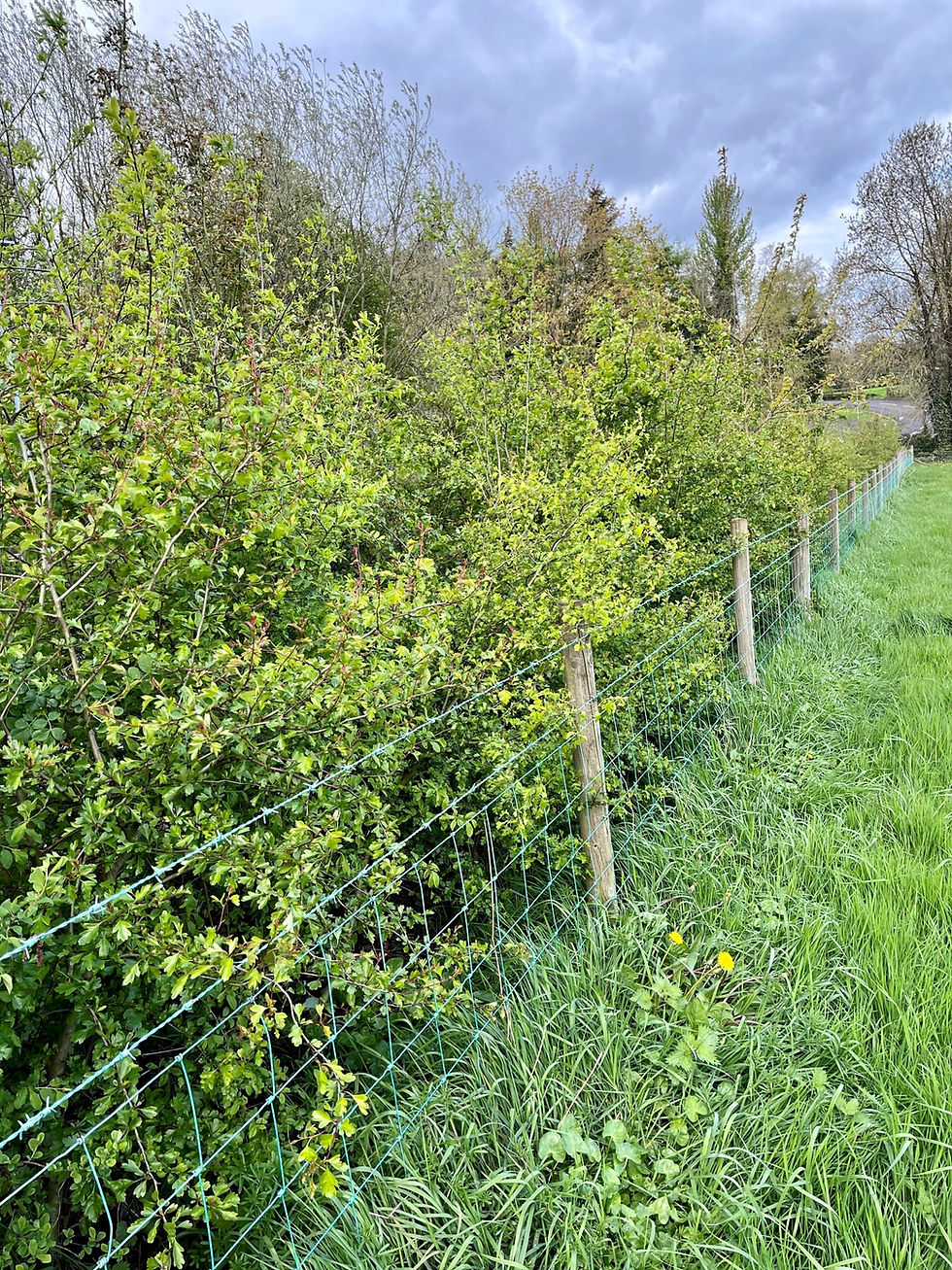CAFRE continues expansion of NI hedgerows providing essential habitats for native species
- Love Ballymena

- May 28, 2023
- 3 min read

The saying ‘Ne’er cast a clout till May is out’ refers to the hawthorn blossom, not the month! Surely there can be no more pleasant sight and smell than that of the whitethorn flowers seen in our hedges in May and early June.
For National Hedgerow Week earlier this month, CAFRE Agriculture Technologists Terence Henry and Nicola Warden have been reviewing hedge work at the College over the past four decades. Terence explained:
“Most Northern Ireland hedges were planted between 1750 and 1850 and we still retain a significant hedgerow resource of approximately 110,000 km.
"Hedgerows are important habitats especially given our limited extent of woodland cover at just 9%. Thirty-six UK priority species are associated with hedgerows. Of these species, ten, including hedgehog and brown long-eared bat, are known to occur along hedgerows in Northern Ireland.”

The Climate Change Committee (CCC) recommends that the extent of the UK’s hedgerow network should be increased by 40% to support the government’s goal of net zero carbon emissions by 2050. Hawthorn / blackthorn hedges left untrimmed for three years contain an above ground biomass (AGB) of 42 tonnes carbon / hectare and a similar below ground biomass (BGB) of 38 tonnes carbon/hectare.
Terence said:
"Each year for the past 40 years, CAFRE students have been planting new hedges on the College Estate at a rate of 250 metres each year. In the 1980s, most hedges planted were monospecific hawthorn. This was a missed opportunity for biodiversity as the more kinds of trees and shrubs a hedge has, the more diverse the invertebrate population and the more likely it is to be rich in bird species.
“Thus, from the 1990s, we planted a mix of native species, for example, hawthorn, blackthorn, holly, hazel and guelder rose and included native trees such as oak, birch and wild cherry. As different shrub and tree species flower at different times, our species-rich hedges provide a pollen and nectar food resource over a wider time period.”

Nicola added:
“All hedging used for planting are native species of local provenance – they are grown from seed collected locally resulting in better disease resistance and adaption to our local climate and soil. Using local provenance reduces the risk of disease introduction and invertebrates are adapted to the timing of leafing up and flowering.
"Indeed, research in Wales has shown that hawthorn of Hungarian provenance grew more slowly, were less thorny, came into leaf earlier and were more susceptible to powdery mildew attack than plants of native provenance.”
Terence explained that:
“It is relatively straightforward to plant a new hedge, using 6-8 whips per metre, in a double staggered row method, with occasional hedgerow trees to add to the diversity. However, aftercare is essential to ensure successful establishment. Most new hedges will need fencing on one or both sides to protect them from livestock. Rabbit proof fencing may also be needed. Weed control on fertile sites can be very challenging. Weeds will compete with the hedge plants for water, light and soil nutrients.”

Nicola reported that CAFRE has demonstrated several weed control methods, including hand weeding, chemical control, bark chip mulch, waste silo polythene cover and this year, compostable film to suppress weed growth and reduce the amount of non-biodegradable polythene mulch in the hedge base. The compostable film was easier to use than polythene and should allow a diverse hedge base flora to eventually establish. Degradation of the film depends on the intensity of ultra-violet radiation, temperature, rainfall, oxygenation, soil pH and the amount of micro-organisms present in the soil and this will be evaluated over the next few years. Hand weeding on both sides of the 1.0 metre-wide film will be essential for the first few years.”
It is often recommended that hedge plants, except holly, are cut back to 15 cm shortly after planting to encourage the plants to produce multiple shoots and a hedge with a thick base.

However, Terence stressed that: “If the plan is to lay the hedge in the future, hedge plants should not be cut back at planting. Laying is where the hedge stems are cut through partially, close to ground level and then bent over uphill at an angle of about 30°. The laid stems, called pleachers, will require staking to ensure they are not blown away by strong wind. For a hedge that was just planted some years earlier, there will be sufficient ‘natural’ stakes present without having to use hammered in hazel stakes.”
Finally, Terence concluded: “We have learned a lot over the years about hedge planting and restoration by laying or coppicing with planting up the gaps. When a new hedge matures or a laid or coppiced hedge thickens out at the base, it is a most satisfying outcome!”
CAFRE guidance on hedging is available on the website at:








